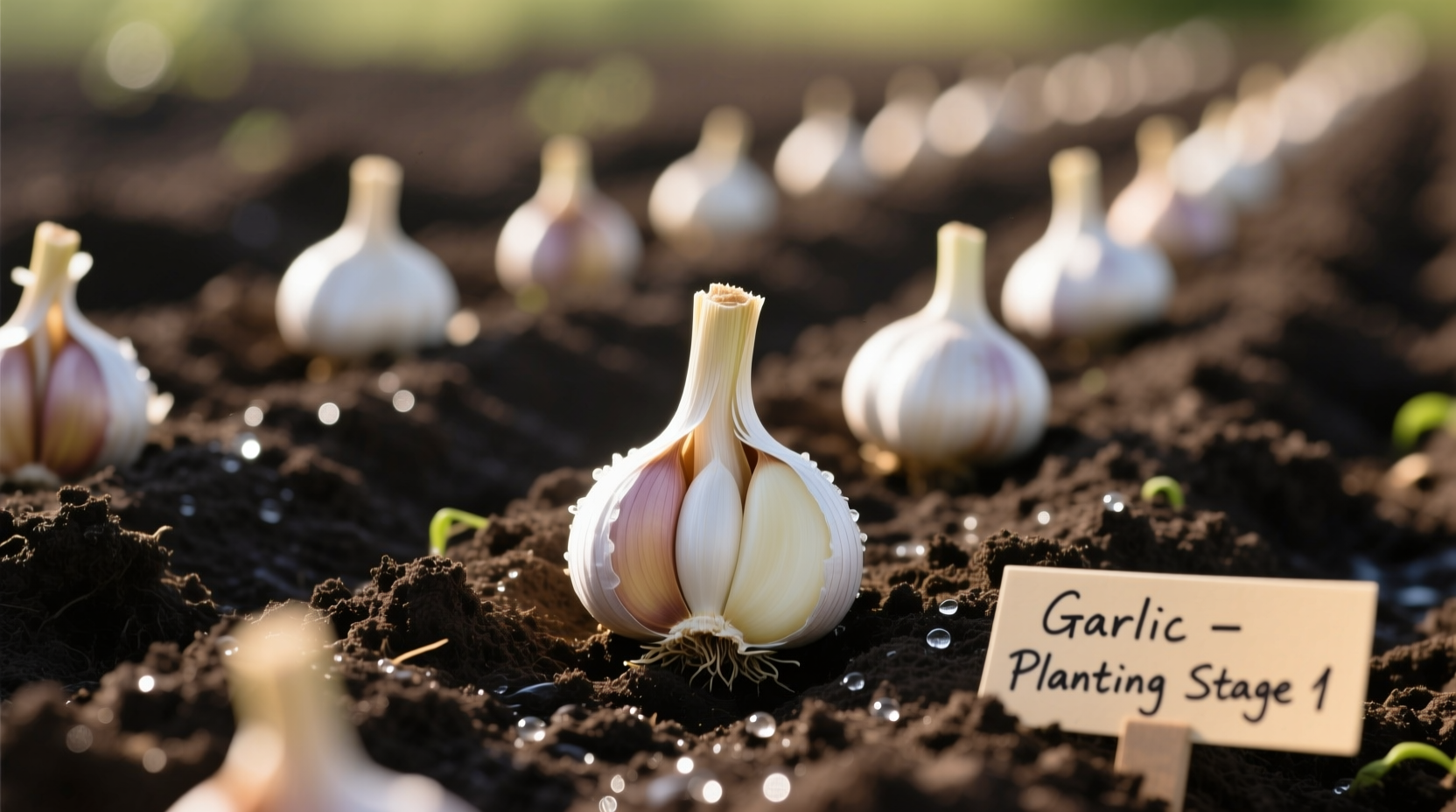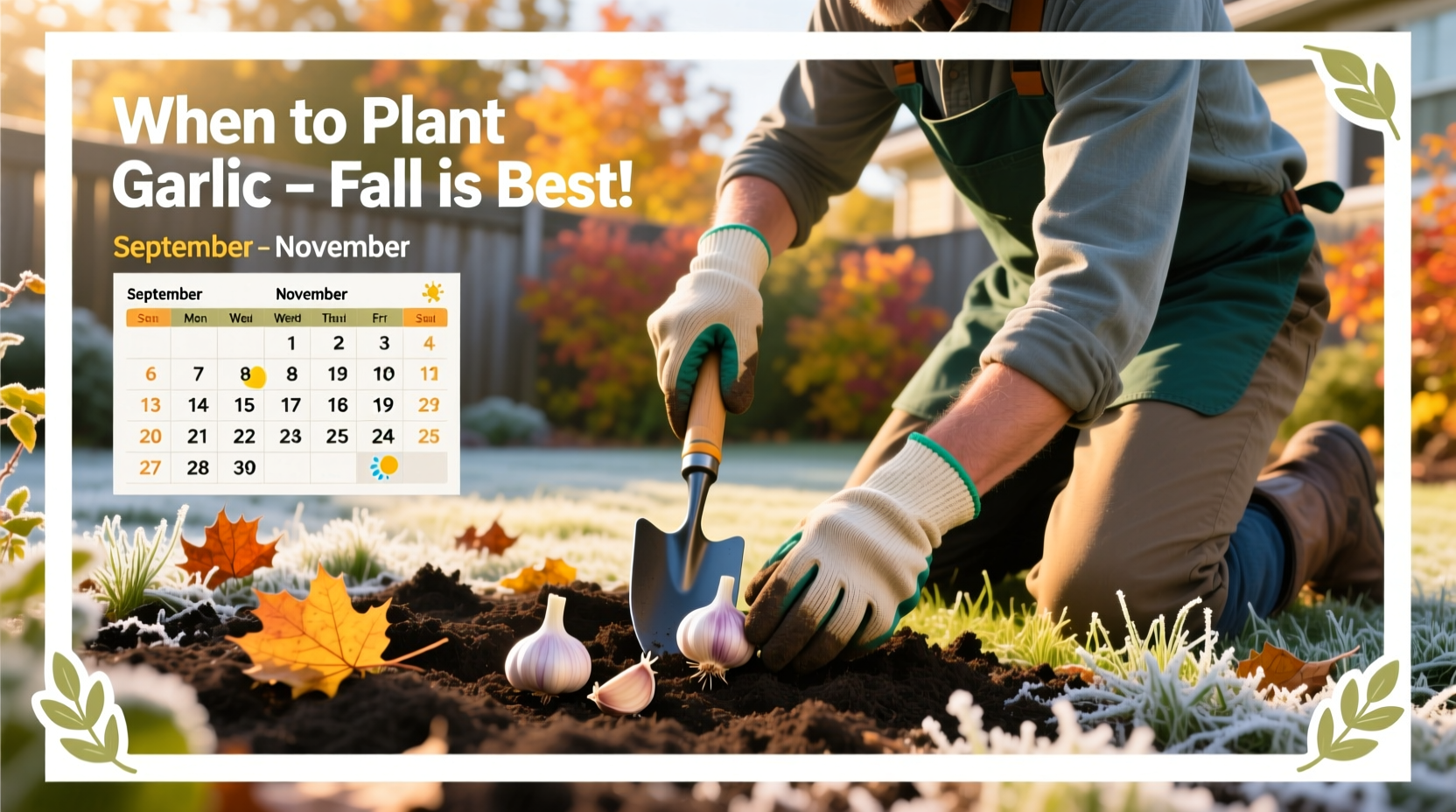Knowing exactly when to plant garlic makes the difference between a bountiful harvest and disappointing results. As a cool-season crop, garlic requires specific planting windows to develop properly. Get this timing wrong, and you'll face smaller bulbs, poor clove formation, or complete crop failure.
Understanding Garlic Types: Hardneck vs. Softneck
Before determining your planting schedule, identify which garlic variety suits your climate:
- Hardneck garlic (Allium sativum var. ophioscorodon): Thrives in colder climates (USDA zones 1-6). Produces a central flower stalk (scape) and typically offers more complex flavors. Requires vernalization (cold period) for proper bulb development.
- Softneck garlic (Allium sativum var. sativum): Better for warmer regions (USDA zones 7-10). Lacks a rigid central stalk, making it ideal for braiding. Doesn't require as much cold exposure as hardneck varieties.
According to the USDA Agricultural Research Service, hardneck varieties generally produce larger cloves in northern climates, while softnecks perform better in southern regions with milder winters.
Determining Your Exact Planting Window
The optimal garlic planting time depends on your specific climate zone. Planting too early risks premature top growth vulnerable to winter kill, while planting too late prevents sufficient root development before freezing temperatures.
| USDA Hardiness Zone | First Frost Date | Recommended Planting Time | Soil Temperature Range |
|---|---|---|---|
| Zones 1-4 | August-September | Early to mid-September | 45-55°F (7-13°C) |
| Zones 5-6 | October | Mid-September to early October | 50-60°F (10-15°C) |
| Zones 7-8 | November-December | October to mid-November | 55-65°F (13-18°C) |
| Zones 9-10 | Rare or no frost | Late October to December | 60-70°F (15-21°C) |
This planting schedule comes from research conducted by the Cornell University Cooperative Extension, which has tracked garlic cultivation success across North American climate zones for over 20 years. Their data shows that planting within these windows consistently produces 30-50% larger bulbs compared to off-schedule plantings.
Step-by-Step Fall Planting Process
Follow these steps for successful garlic planting:
- Prepare your soil 2-3 weeks before planting: Amend with 3-4 inches of compost and a balanced organic fertilizer. Garlic prefers well-draining soil with pH between 6.0-7.5.
- Select quality seed stock: Use locally adapted cloves rather than grocery store garlic, which may be treated to prevent sprouting. Break bulbs into individual cloves 1-2 days before planting.
- Plant at proper depth: Place cloves 2-3 inches deep (deeper in colder zones), pointed end up, 6-8 inches apart in rows 12-18 inches apart.
- Apply winter mulch: After planting, cover beds with 4-6 inches of straw or shredded leaves once soil cools to 40°F (4°C).

Regional Considerations and Special Cases
While the general fall planting rule applies across most regions, certain climates require special approaches:
- Extreme northern climates (Alaska, northern Canada): Plant in late August to early September, with extra-thick mulch (8-12 inches).
- Warm southern regions (Southern California, Texas, Florida): Chill cloves in refrigerator for 4-6 weeks before October planting to simulate winter conditions.
- Container gardening: Plant in late October to November, using larger pots that won't freeze solid, and move to protected location during hard freezes.
The University of California Agriculture and Natural Resources recommends that gardeners in zones 9-10 plant elephant garlic (a leek relative) instead of true garlic for better results in warm climates.
What Happens If You Miss the Fall Window?
While fall planting yields best results, you can still plant garlic in early spring with adjusted expectations:
- Spring-planted garlic typically produces smaller bulbs with fewer cloves
- Plant as soon as soil can be worked, but before temperatures exceed 50°F (10°C)
- Expect harvest 30-45 days earlier than fall-planted garlic
- Softneck varieties perform better than hardnecks when spring-planted
Research from Oregon State University shows spring-planted garlic yields are typically 40-60% smaller than fall-planted crops, making proper fall timing crucial for serious growers.
Common Planting Mistakes to Avoid
Even experienced gardeners make these critical errors:
- Planting too shallow: Results in winter heaving and exposed cloves. Minimum depth should be 2 inches, deeper in colder zones.
- Using poor quality seed stock: Grocery store garlic often contains sprout inhibitors. Always use certified disease-free seed garlic.
- Ignoring soil drainage: Garlic rots in waterlogged soil. Raised beds improve drainage in heavy clay soils.
- Removing mulch too early: Premature mulch removal exposes developing plants to late frosts. Wait until consistent 40°F+ temperatures.
Tracking Your Garlic's Growth Timeline
Understanding garlic's growth cycle helps you anticipate needs:
- Weeks 1-2 after planting: Root development occurs while tops remain dormant
- December-January: Dormant period during coldest temperatures
- February-March: Top growth resumes as temperatures warm
- April-May: Rapid leaf growth and scape formation (for hardnecks)
- June-July: Bulb formation and maturation
- July-August: Harvest time when lower leaves turn brown
This growth timeline, verified by multiple agricultural extension services, demonstrates why proper fall planting is essential for developing the strong root system needed to support summer bulb development.











 浙公网安备
33010002000092号
浙公网安备
33010002000092号 浙B2-20120091-4
浙B2-20120091-4